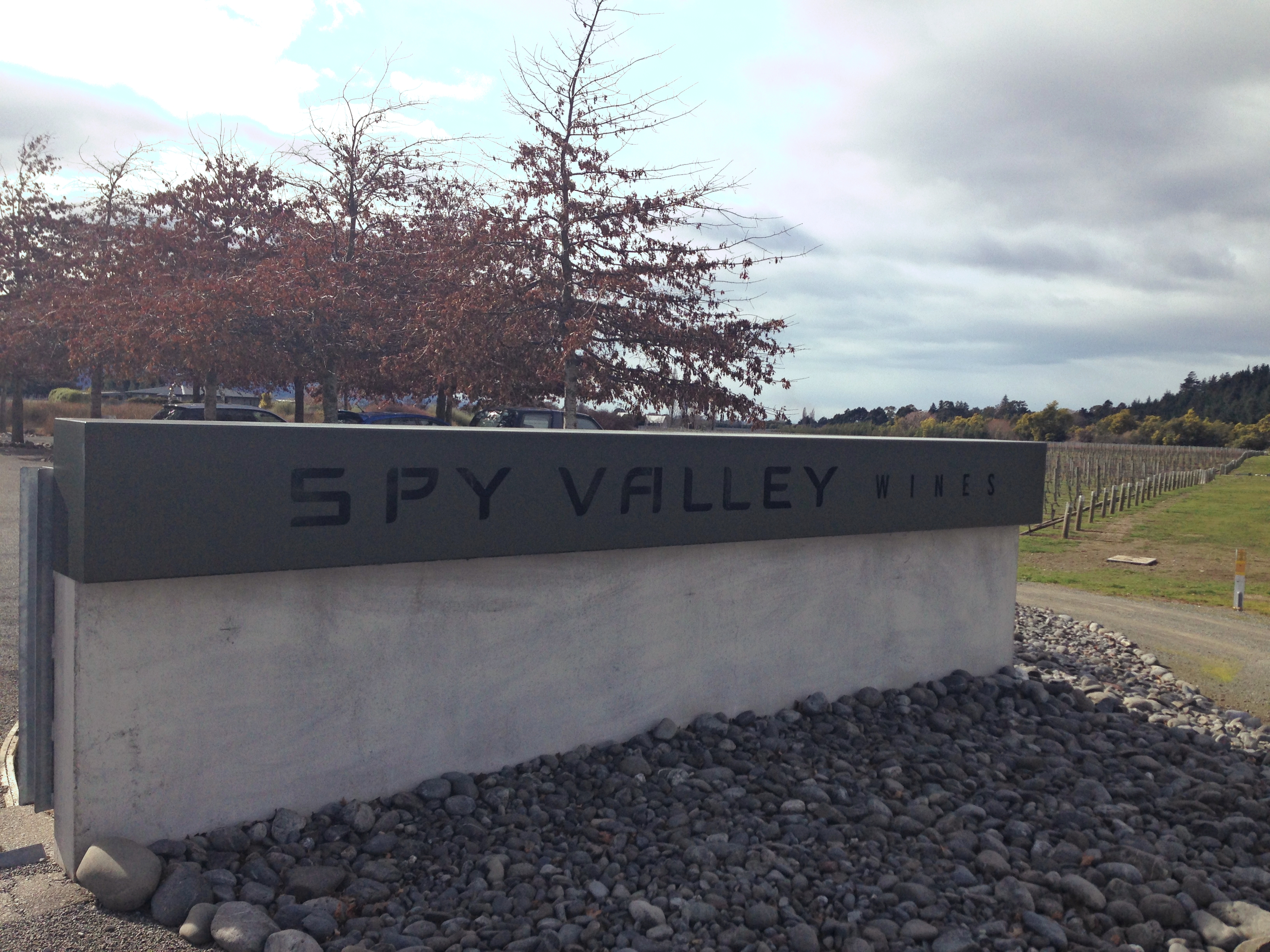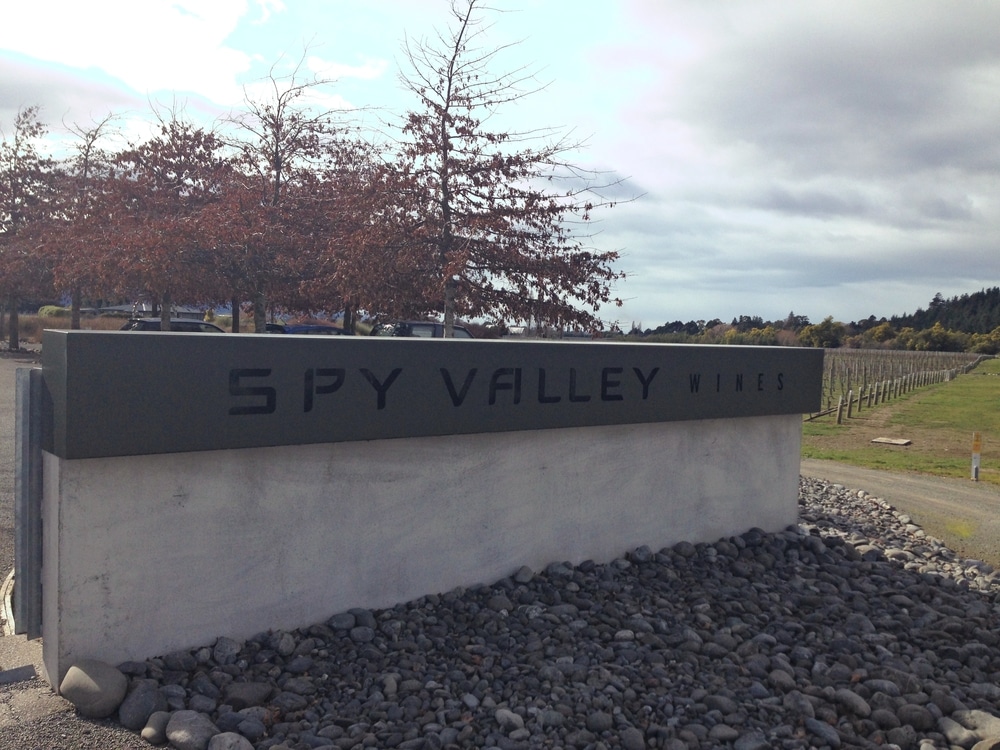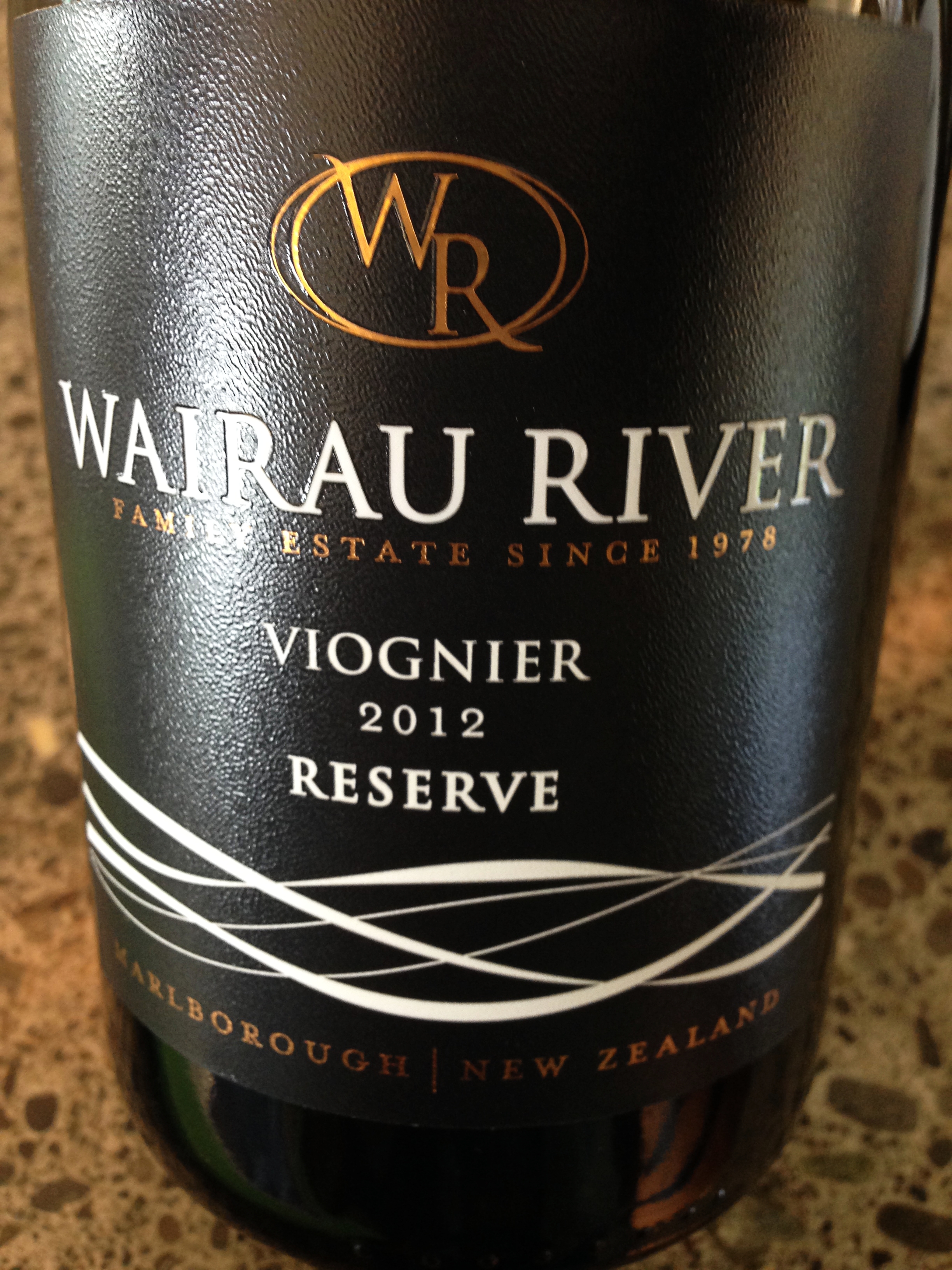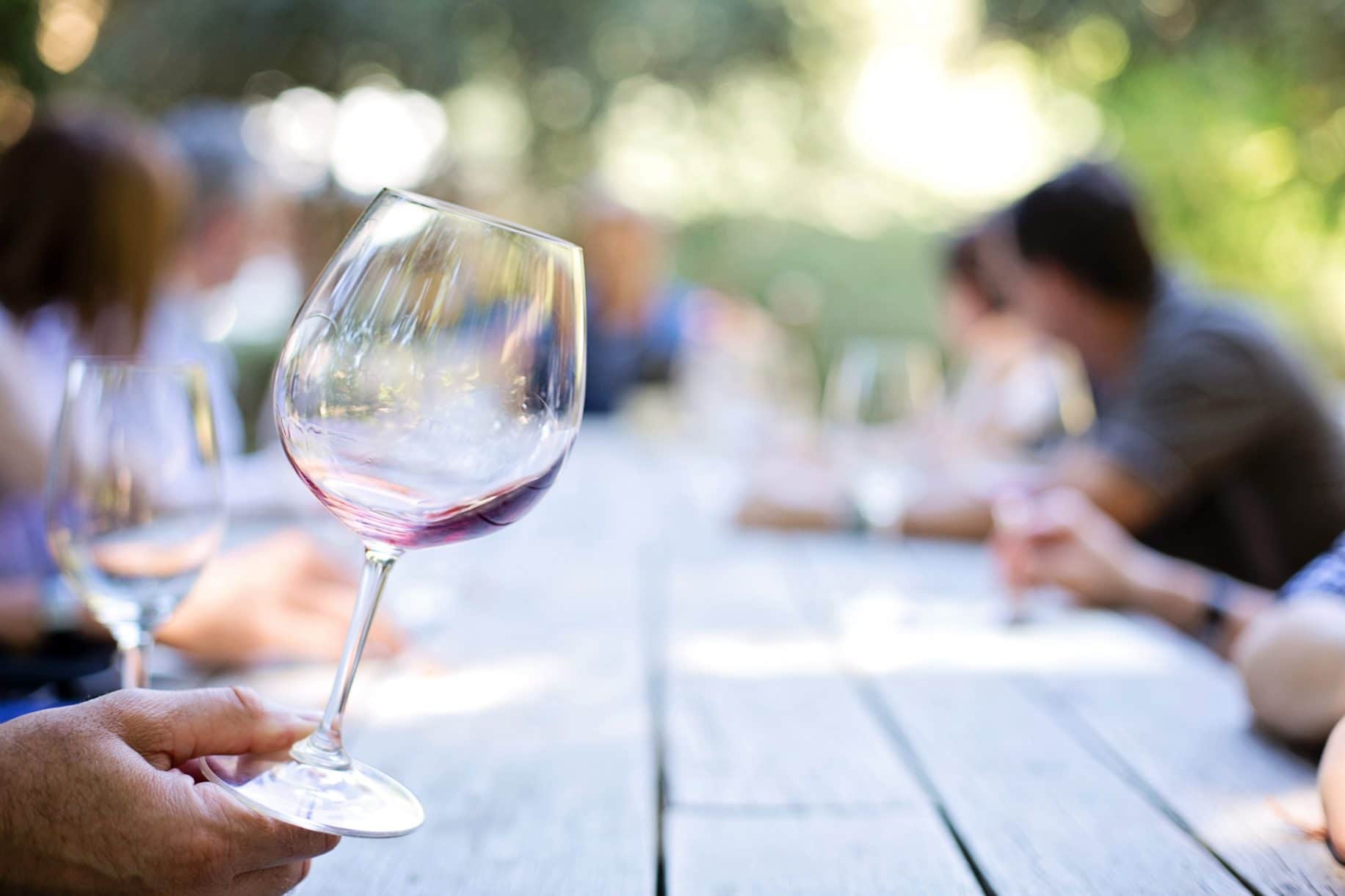My plane touched down in Blenheim, the heart of New Zealand’s Marlborough wine country at 9:35 AM. By 10:00, I was standing at the Cellar Door (the New Zealand term for “tasting room”) of Spy Valley Wines, with adrenaline rushing through my jet-lagged veins. This trip was long awaited and I was determined to enjoy every minute of it. My gracious host, Spy Valley’s charming winemaker, Paul Bourgeois, cheerfully showed me around the facility. It was a crisp and sunny winter’s day and I soaked in the brightest sky I had ever seen.
I purposely did no research prior to my trip, wanting the experience to land on me in the most organic way possible. Prior to my visit, all I knew of Spy Valley was that the winery there made a great, well-priced Sauvignon Blanc.

I noted that Spy Valley is quite a clandestine title. “Is it a spy epicenter?” I asked my host. To my astonishment, I was accidentally right. The winery is located right next to a government satellite spy base. I then felt the need to suggest they name their wines after Agent 007 only to discover James Bond posters on the wall. They even offer a Pinot Noir bottling called “Pinot 007.” Apparently a 13 plus hour flight causes clairvoyance!
The New Zealand wine industry is a mere 30 something years old. Spy Valley (originally named Johnson Estate) was started over 20 years ago, so the winery is a veteran. Founder, Brian Johnson and his wife Jan had originally started a luxury lodge on the site and went on to plant 380 acres of vines. At the time, Chardonnay was the dominant variety, yet Brian had the foresight to plant others, including Pinot Dijon clones 115, 113, 114, 667, 777, etc. The winery was built in 2002 and is currently producing several varieties, including Sauvignon Blanc, Pinot Gris, Gewürztraminer as well as Pinot Noir.
I was particularly taken with their sparkling wine, named “Echelon.” It’s a 50/50 Pinot and Chardonnay blend, made bone dry, without dosage, left two and a half years on lees. Only 1,500 six pack cases were made, with a large share of production going to Japan. Spy Valley is a member of a group called “Methode Marlborough,” formed with the idea to promote and popularize the region’ delectable sparkling wines.
Of note, is the winery’s Envoy program, started in 2005. The wines produced under the Spy Valley Envoy label are single-vineyard offerings with fruit sourced from individual low-yield blocks (under 2 tons per acre). Envoy labeled wines are fashioned with ultimate quality fruit combined with meticulous attention to detail during the winemaking process. The method is clearly low intervention, with close attention being paid to the vineyard prior to harvest. We spoke briefly of the “Marlboroughness”—highly identifiable and instantly relatable flavor profile: the seductive passion fruit, exotic quince, bright gooseberry, that subtle elegance, combined with unmistakable vibrancy and brisk freshness.
The winery is entirely self-sustained, with solar panels (Spy Valley was the first in the area to go solar), nitrogen generator, its own bottling line—a rarity, and even a glass crushing facility for recycling bottles. It is clear that New Zealand wine production and vineyard techniques have improved with each harvest. We all learn best from our own errors. Lessons learned are the most valuable tools in the arsenal of Mother Nature’s apprentice.
Spy Valley has no ambitions to emulate the Old World wines or elaborate on what Mother Nature graciously delivers. Their only goal is to make wines of authenticity, with strong textural elements, clean finish, that are driven by opulent, regionally-induced aromatics. Harmony is the key, with no element overpowering or out of place or in any way. Age worthiness is valued and maintaining the integrity of each bottling is paramount.
Spy Valley was a heady start to what turned out to be a trip full of revelations and rarified insider look into the world prior known by taste impressions alone.
My next stop was Wairau River Wines, a short drive on Rapaura Road, the rough equivalent of Highway 29 in the Napa Valley. I was greeted by Matt Parker, the winery’s VP of International Sales.Owners, Phil and Chris Rose founded the winery in 1978. They planted 600 acres of vineyards, and the business still remains a true family affair. All of the family, even the kids, contribute to the business. Wines are produced from 100% estate fruit. The wine label reflect the family connection, with river patterns signifying family roots moving in unison.
Fruit driven, low yielding, hand farming and uncompromising quality are the hallmarks of the operation. The winery boasts a well known restaurant, famous for its cheese soufflé and sublime lamb burgers. The menu features fresh, local produce and is inspired by the magnificent bounty of Marlborough region.
I tasted 2013 and previewed 2014 Pinot Gris and Sauvignon Blancs side by side. Based upon my preview, I say readers rejoice! Both are great. The 2014’s are aromatically off the charts. Even in their extreme youth, they are seductive endeavors. I know I will be adding them to my cellar once they hit the US market. Fresh flavors, punchy, assertive minerality and salinity, varietal purity and savvy personally are all part of Wairau River wine style. Limited number of their wines are available in major US markets.

I was greeted by Ben Glover, the winemaker, and his brother, Jack, who is the head of marketing. After a chilly (August is winter in New Zealand) yet visually stunning tour of the vineyards, I was treated to a comprehensive tasting of their wines. Ben is a graduate of Canterbury University and a recipient of a post graduate degree in oenology from Lincoln University. He has fifteen vintages of winemaking under his belt plus the same number of years of wine judging, and it shows.
Pretence doesn’t reside in the Mud House abode, hard work and dedication does. Ben is clearly passionate about his craft. He’s filled with the spirit of innovation and a relentless drive towards producing unabashedly new world style, aromatically superior wines. This is no sweet tropical fruit bowl, ladies and gentlemen, think bright acidity, superb minerality, voluptuous yet well harnessed fruit without a hint of flabbiness. Glover is a purist. He offers no-tricks winemaking. His style straightforward and honest. He focuses on nursing and shepherding, not manipulating and transforming.
I mumbled something about jalapeño and snow pea flavors, assuming that the jet lag has finally set in and got the best of me, yet to my astonishment, those were actually correct, along with nettles, tomato stalks (those will be coming up a lot) and piercing freshness.
Established in 1996, the Mud House name reflects the wine’s humble beginnings, it’s inherent connection to earth. Terroir is the term that gets abused a lot these days. Mud House really embraces this concept. Wine drinkers will experience it in every sip of their deeply authentic, carefully crafted wines. Collaborative efforts of the viticulturists, vineyard managers and winemakers provide a harmonious unified vision ensuring the integrity of the final product. Using both traditional, established and innovative techniques, Ben crafts cool climate wines of character and distinction.
Seek them out at every opportunity. I know I will.
These three producers represent what I love about New Zealand, a pioneering spirit, authenticity, incredible value and most of all, a diverse and incredibly tasty portfolio of wines. To that, I say “Good on You!”






You must be logged in to post a comment.